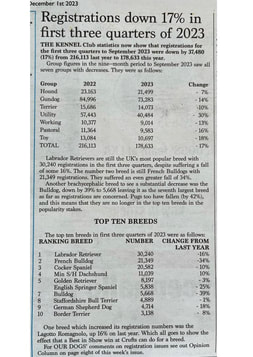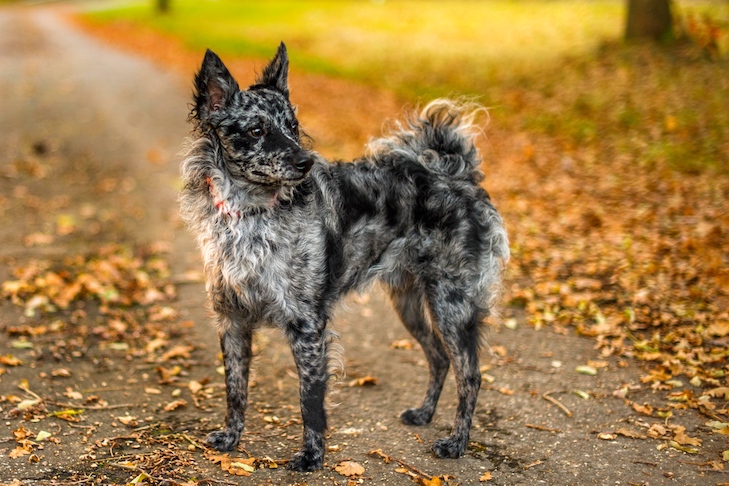
Years ago, I rushed one of my aging girls to the vet because of her persistent cough. Concerned it might be pneumonia, I prepared for the worst and an overnight stay. Thankfully, my vet, known for his practical approach, performed an X-ray while she was awake and diagnosed her with a manageable heart condition. It was a relief! What surprised us both was the discovery of full arthritis in her spine, despite her trotting in and wagging her tail happily. I mentioned she'd been on a Golden Paste, a turmeric supplement, for 18 months, and he exclaimed we absolutely must continue because it seemed remarkably effective!
All dogs need extra care as they age. But Bulldogs, in my experience, can seem to age almost overnight. Therefore, maintaining their activity levels is vital for their overall health and happiness. In this blog, we'll delve into why keeping Bulldogs active is so crucial and ways you can support their mobility and comfort. ★ The Importance of Keeping Bulldogs ActiveBulldogs may not be the most energetic breed. Still, regular exercise is vital to prevent obesity, support joint health and maintain muscle tone (the breed standard states that a firm muscular condition is highly desirable). Here are some reasons why keeping your Bulldog active is essential:
★ Recommended Activities for BulldogsWhile Bulldogs don't require intense exercise, incorporating moderate activities into their daily routine can make a big difference…
★ Joint Supplements for BulldogsAs Bulldogs age, they may benefit from joint supplements to support their mobility and reduce discomfort. Here are some of my highly recommended joint supplements:
★ ConclusionKeep an eye on your Bulldog aging, so you can take proactive measures to help your Bulldog live a long, healthy, and joyful life! Always consult your vet or a canine nutritionist if you are concerned about the impacts of any supplements.
But as our Bulldogs age, they become the Princess in the fairy tale. It becomes crucial to monitor their health closely and make necessary adjustments to ensure they remain comfortable and happy. Like all senior dogs, ageing Bulldogs can experience various age-related issues that may require changes in their care routine. These small changes can significantly impact their well-being, from softer bedding to dietary adjustments. So, given the fairy tale, let's look at bedding first! Comfort and Bedding One of the first things to consider is their sleeping arrangement. As dogs age, they can develop bald spots on pressure points, joint pain, and arthritis, making it crucial to provide a comfortable place to rest.
Diet & Nutrition As Bulldogs age, their dietary needs change. Ensuring they get the right nutrition is vital for maintaining their health and preventing common issues like obesity and digestive problems.
Joint Care & Mobility Joint issues are common in senior Bulldogs, so it's important to take steps to support their mobility and ease any discomfort they may experience.
Grooming & Hygiene
Regular Vet Check-Up One of the most important aspects of caring for a senior dog is ensuring they receive regular veterinary care. Frequent check-ups can help catch potential health issues early and allow for timely intervention.
Environmental Adjustment Making minor changes to your home environment can significantly improve your Bulldog's quality of life.
By making these thoughtful adjustments and providing attentive care, you can help your ageing Bulldog enjoy their golden years with comfort and happiness. Check out my other blog posts for more detailed tips on senior Bulldog care.
Have you ever been captivated by Bulldogs' endearing wrinkles and charming snorts, only to wonder what's behind their cute exteriors?
If so, you're not alone. As a dedicated Bulldog enthusiast, I longed for a platform where I could delve deeper into the realities of this beloved breed, sharing authentic insights with fellow admirers, owners, and breeders around the globe. This longing gave birth to the Bulldog Broadcast, a podcast dedicated to exploring the true essence of Bulldogs beyond the stereotypes and misinformation. The Inception of Bulldog Broadcast
As the host of the Bulldog Broadcast, my journey with this podcast began somewhat serendipitously. During a scroll through a Facebook group, initially joined out of curiosity rather than active participation, I stumbled upon a post asking for advice on Bulldog puppies. The comments section was rife with misinformation and negativity about Bulldogs, portraying them as fragile and unhealthy.
This frustration sparked an idea: rather than engaging in a futile online debate, why not create a positive, informative space dedicated to Bulldogs? A podcast seemed the perfect medium to reach a wider audience, dispelling myths and offering real-life insights into Bulldog ownership and breeding. Addressing the Stigma
Bulldogs often face unfair stigma, mainly pedigree and brachycephalic (flat-faced) breeds. Critics claim they are prone to health issues and have short lifespans. As someone who has lived with and loved Bulldogs for over three decades, I felt compelled to address these misconceptions.
Why would I, a reasonably sensible person, choose to breed dogs supposedly "on death's door"? The truth is, with responsible breeding and proper care, Bulldogs can live healthy, fulfilling lives. This podcast highlights responsible breeders, dedicated owners, and real Bulldog stories that showcase the breed's resilience and vitality. My Bulldog Journey
This extensive experience has taught me that while Bulldogs are unique, requiring special care and understanding, they are incredibly rewarding companions. They are not just pets; they are little personalities wrapped in dog bodies, full of character and charm.
What to Expect from the Bulldog Broadcast
The Bulldog Broadcast is designed to cater to prospective and current Bulldog owners. We'll cover topics such as:
✅ Identifying Reputable Breeders: Tips for finding ethical breeders dedicated to the health and longevity of the breed. ✅ Bulldog Care and Responsibilities: Practical advice on caring for Bulldogs, understanding their unique needs, and ensuring they lead happy, healthy lives. ✅ Dispelling Myths: Addressing common misconceptions about Bulldogs and sharing success stories from long-lived, healthy Bulldogs. ✅ Interviews and Insights: Conversations with breeders, rescue workers, and Bulldog enthusiasts who have significantly contributed to the breed. Join the Community
The Bulldog Broadcast is more than just a podcast; it's a community. Alongside each episode, you'll find show notes and resources on our website, Bulldogbroadcast.com. I also invite you to join our Facebook community, where you can ask questions, share your experiences, and connect with fellow Bulldog lovers.
Spread the Word
While most podcasters ask for ratings and reviews, my primary request is simple: tell two people interested in Bulldogs about this podcast. By spreading the word, you help build a knowledgeable and supportive community dedicated to the love and welfare of Bulldogs.
Signing Off
Thank you for joining me on this journey, you can listen on any podcast streaming platform. I hope the Bulldog Broadcast becomes a valuable resource for you, offering insights, support, and a sense of community. Whether you're a seasoned Bulldog owner or considering bringing one into your life, this podcast guides and inspires you.
So, stay tuned and let's celebrate everything that makes Bulldogs truly special. Ta ta for now! … and what it means for Puppy seekers! CLICK TO ENLARGE CLICK TO ENLARGE The Kennel Club published their 3rd quarter registration stats this week, and puppy registrations are down by 17%. Even more surprising, Bulldogs are down by a whopping 39%, the second* most significant drop in the top ten most favoured breeds to under 6,000 born up to September 2023. To give you an idea, there were over 21,000 French Bulldogs registered and over 30,000 Labradors - crazy numbers. Remember, many popular 'fad and fashion' dogs can’t be KC registered because of their coat colour or type (which means they aren’t purebred) and don’t get me started on the XL bully ban. American Bullies are ABKC reg, and their number is unknown in this country - but it’s A LOT. Now, this isn’t a bad thing, in my opinion. Far too many puppies have been bred for a quick buck since the pandemic, so it’s good to see it normalise again. Also, global economic pressures were always going to impact demand. And I’m sure the rescue and rehome charities are singing their praises for the decline. But it also means that buying a well-bred, quality Bulldog puppy is harder than ever. Any breeder that’s worth their sort will have a waitlist, so if you want to add a puppy to your family any time soon, make sure you get on a list and be prepared to wait. * Pugs dropped by 42% and are no longer in the Top 10. I was sent this intriguing study printed in the Telegraph that I think you'll find absolutely adorable. Researchers have found that our fascination with flat-faced dogs like Bulldogs, Pugs, and French bulldogs is due to their uncanny ability to tug at our heartstrings like babies. I've struggled to believe this because anyone who knows me knows my 'baby interest' is absolutely zero. Coo, I do not. These brachycephalic breeds, known for their cute, baby-like faces and large eyes, have been gaining popularity for decades. According to the study from Hungary, their helplessness is the key. When faced with a problem, they're more likely to seek help from humans rather than solve it themselves. I was dumbfounded by the above, but it's most certainly true from my years of experience, and I even wrote about my IQ and EQ differences with my Bulldog vs. Labrador emails.
 ⬆️ This is Captain Biggles (2023) ⬆️ This is Captain Biggles (2023) The study suggests that this behaviour increases the bond between humans and these cute canines, making us feel more attached to and dependent on them. It's almost as if they've evolved to trigger our nurturing instincts. And here's the kicker: While some may argue that Bulldogs are less independent, the researchers suggest they've mastered a different strategy. They use their "baby-like" behaviour to get humans to solve their problems. Pretty clever, right? So, the next time your bulldog looks at you with those big, innocent eyes, remember they're just tugging at your heartstrings with their irresistible charm! |
Categories
All
AuthorWritten exclusively by Sara, a proud founder of the LaRoyal name and a seasoned bulldog enthusiast, our blogs are overflowing with an abundance of show wins, captivating ideas, and a plethora of thoughts and feelings. We are thrilled to embark on this journey, sharing our "real-life" dog ownership experiences with you, our valued readers. Archives
July 2024
|
In summary ...We have lived with the breed for nearly 30 years, during this time we were introduced to the 'show scene' and have never looked back! We have been fortunate to win over 25 CC's to date and have been awarded the highest of accolades with home-bred dogs including Best of Breed at Crufts 2013.
|
Popular pages ... |
This website and its content is copyright of LaRoyal Bulldogs™ © 1999 - Present. All rights reserved







 RSS Feed
RSS Feed
